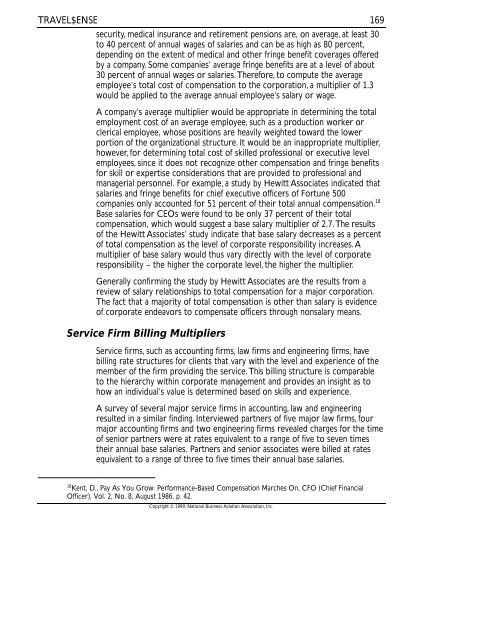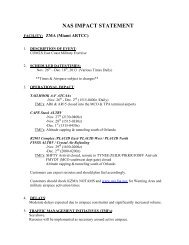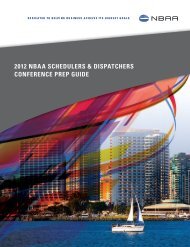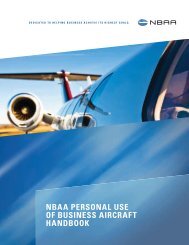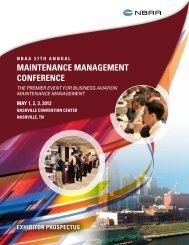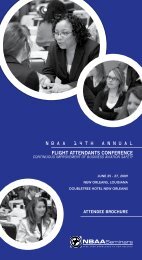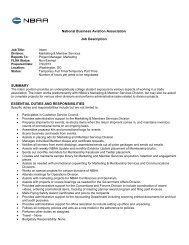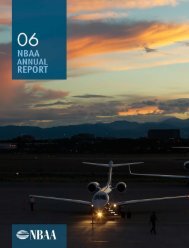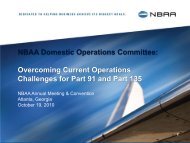Travel$ense User's Guide (PDF, 139 MB) - NBAA
Travel$ense User's Guide (PDF, 139 MB) - NBAA
Travel$ense User's Guide (PDF, 139 MB) - NBAA
- No tags were found...
You also want an ePaper? Increase the reach of your titles
YUMPU automatically turns print PDFs into web optimized ePapers that Google loves.
TRAVEL$ENSEsecurity, medical insurance and retirement pensions are, on average, at least 30to 40 percent of annual wages of salaries and can be as high as 80 percent,depending on the extent of medical and other fringe benefit coverages offeredby a company. Some companies’ average fringe benefits are at a level of about30 percent of annual wages or salaries. Therefore, to compute the averageemployee’s total cost of compensation to the corporation, a multiplier of 1.3would be applied to the average annual employee’s salary or wage.A company’s average multiplier would be appropriate in determining the totalemployment cost of an average employee, such as a production worker orclerical employee, whose positions are heavily weighted toward the lowerportion of the organizational structure. It would be an inappropriate multiplier,however, for determining total cost of skilled professional or executive levelemployees, since it does not recognize other compensation and fringe benefitsfor skill or expertise considerations that are provided to professional andmanagerial personnel. For example, a study by Hewitt Associates indicated thatsalaries and fringe benefits for chief executive officers of Fortune 500companies only accounted for 51 percent of their total annual compensation. 18Base salaries for CEOs were found to be only 37 percent of their totalcompensation, which would suggest a base salary multiplier of 2.7. The resultsof the Hewitt Associates’ study indicate that base salary decreases as a percentof total compensation as the level of corporate responsibility increases. Amultiplier of base salary would thus vary directly with the level of corporateresponsibility – the higher the corporate level, the higher the multiplier.Generally confirming the study by Hewitt Associates are the results from areview of salary relationships to total compensation for a major corporation.The fact that a majority of total compensation is other than salary is evidenceof corporate endeavors to compensate officers through nonsalary means.Service Firm Billing MultipliersService firms, such as accounting firms, law firms and engineering firms, havebilling rate structures for clients that vary with the level and experience of themember of the firm providing the service. This billing structure is comparableto the hierarchy within corporate management and provides an insight as tohow an individual’s value is determined based on skills and experience.169A survey of several major service firms in accounting, law and engineeringresulted in a similar finding. Interviewed partners of five major law firms, fourmajor accounting firms and two engineering firms revealed charges for the timeof senior partners were at rates equivalent to a range of five to seven timestheir annual base salaries. Partners and senior associates were billed at ratesequivalent to a range of three to five times their annual base salaries.18 Kent, D., Pay As You Grow: Performance-Based Compensation Marches On, CFO (Chief FinancialOfficer), Vol. 2, No. 8, August 1986, p. 42.Copyright © 1999, National Business Aviation Association, Inc.


